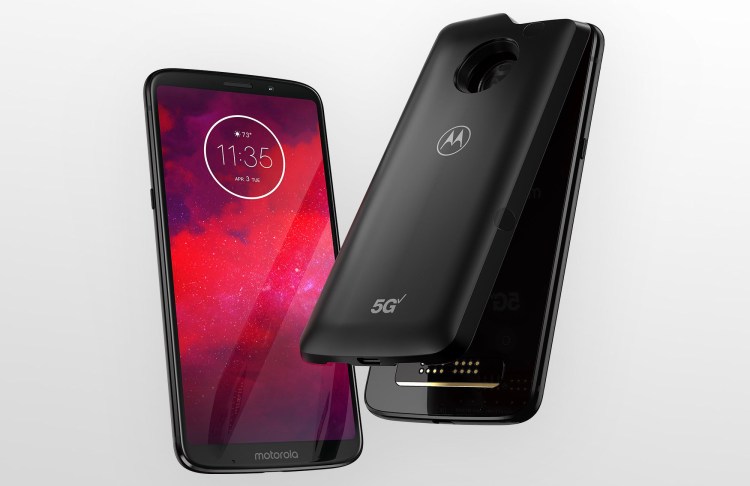Though South Korea’s government expected its three cellular carriers to be the world’s first to offer commercial 5G services with smartphones based on the 3GPP’s official 5G standard, Verizon today launched its mobile 5G network ahead of schedule — a win for the U.S. company as it sought to establish further global 5G bragging rights.
“Verizon customers will be the first in the world to have the power of 5G in their hands,” said Verizon CEO Hans Vestberg. “This is the latest in our string of 5G firsts. Verizon launched the first commercial broadband 5G service last October, Verizon 5G Home, and now we’re lighting up our 5G Ultra Wideband network in Chicago and Minneapolis, providing the world’s first commercial 5G mobile service with a 5G-enabled smartphone.”
Verizon originally scheduled the launch of its mobile 5G network for April 11 with plans to offer Motorola’s Moto Z3 and 5G Moto Mod as the first commercial smartphone. The launch covers parts of only two U.S. cities — Chicago and Minneapolis — but will enable customers to use unlimited 5G data in those cities, falling back to 4G or sub-4G speeds outside covered areas.
South Korea has twice attempted to establish bragging rights as the world’s first country with commercial 5G networks. Last December, the country launched what it said was commercial 5G service, though its carriers had no 5G smartphones or consumer service plans to sell. This week, after 5G smartphone and plan approval delays, the country corralled its carriers and Samsung to launch actual 5G service plans and phones for customers — starting Friday, April 5.
June 5th: The AI Audit in NYC
Join us next week in NYC to engage with top executive leaders, delving into strategies for auditing AI models to ensure fairness, optimal performance, and ethical compliance across diverse organizations. Secure your attendance for this exclusive invite-only event.
Sensing opportunity, Verizon said today that it moved up the launch by a week, giving its customers “first time ever” access to “a commercial 5G network with the world’s first commercially available 5G-enabled smartphone.” Verizon says customers “should expect typical download speeds of 450 Mbps, with peak speeds of nearly 1 Gbps, and latency less than 30 milliseconds,” with network advancements coming throughout the year.
Whether Verizon, AT&T, or South Korea’s carriers “won” this particular 5G race largely comes down to semantics. AT&T launched a mobile 5G network with a hotspot last December, but still isn’t offering either a smartphone or wide commercial service. Verizon launched its pre-standards 5G Home service in four cities last October before today’s 5G Ultra Wideband Network launch in two different cities. On Friday, South Korean carriers are promising 5G coverage in upwards of 80 towns and cities, using the Samsung Galaxy S10 5G — a phone that doesn’t require a 5G accessory for service.
As of today, the 5G Moto Mod is available as a $200 accessory to the $480 Moto Z3, making the total cost of the 5G-capable smartphone $680 — substantially lower than South Korea’s $1,200 entry price tag for the Samsung Galaxy S10 5G, and the $1,050 price tag for LG’s V50 ThinQ with 5G. U.S. pricing hasn’t been announced for the Korean phones, but the S10 5G is expected to launch soon on Verizon’s network.
For now, the Moto Z3 is Verizon’s only 5G option, and the carrier is currently offering it for only $10 per month over 24 months if purchased with a new line, or with an online upgrade. The carrier has promised to offer 5G in 30 U.S. cities this year, and has unlimited 5G plans ranging from $85 to $105. All of the plans have unlimited 5G, but differ in how much 4G/LTE and tethering data users get before they’re subject to “data de-prioritization.”

